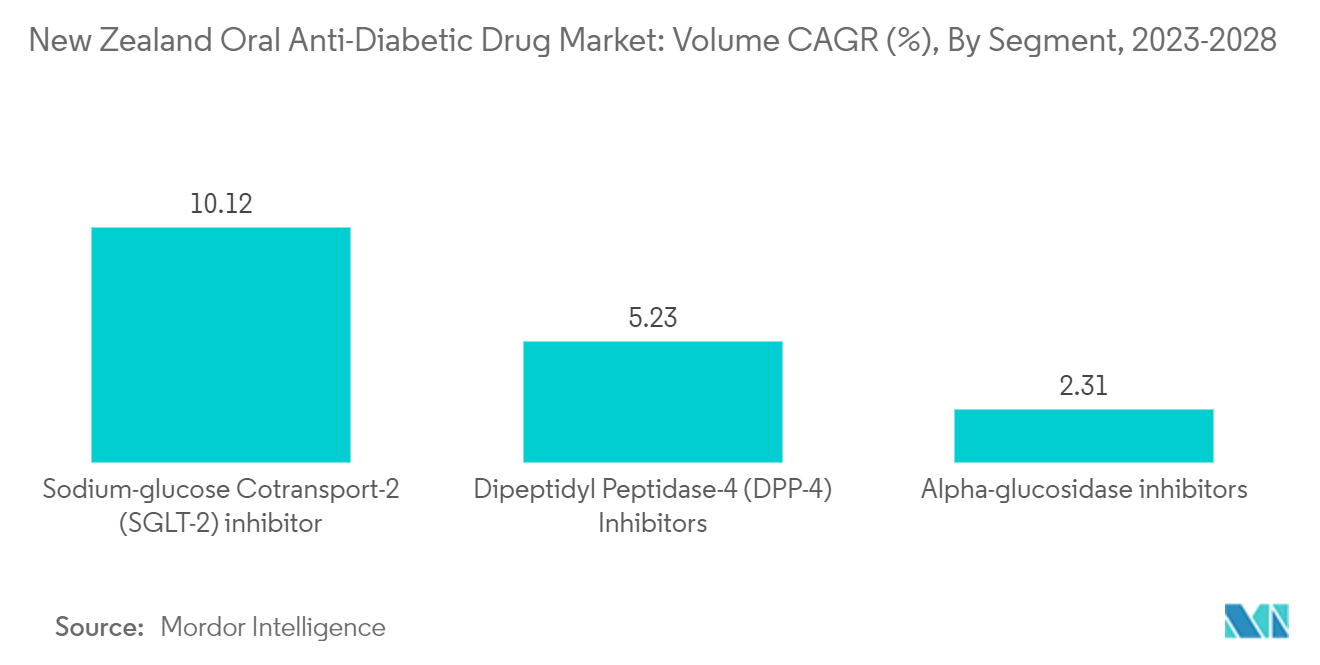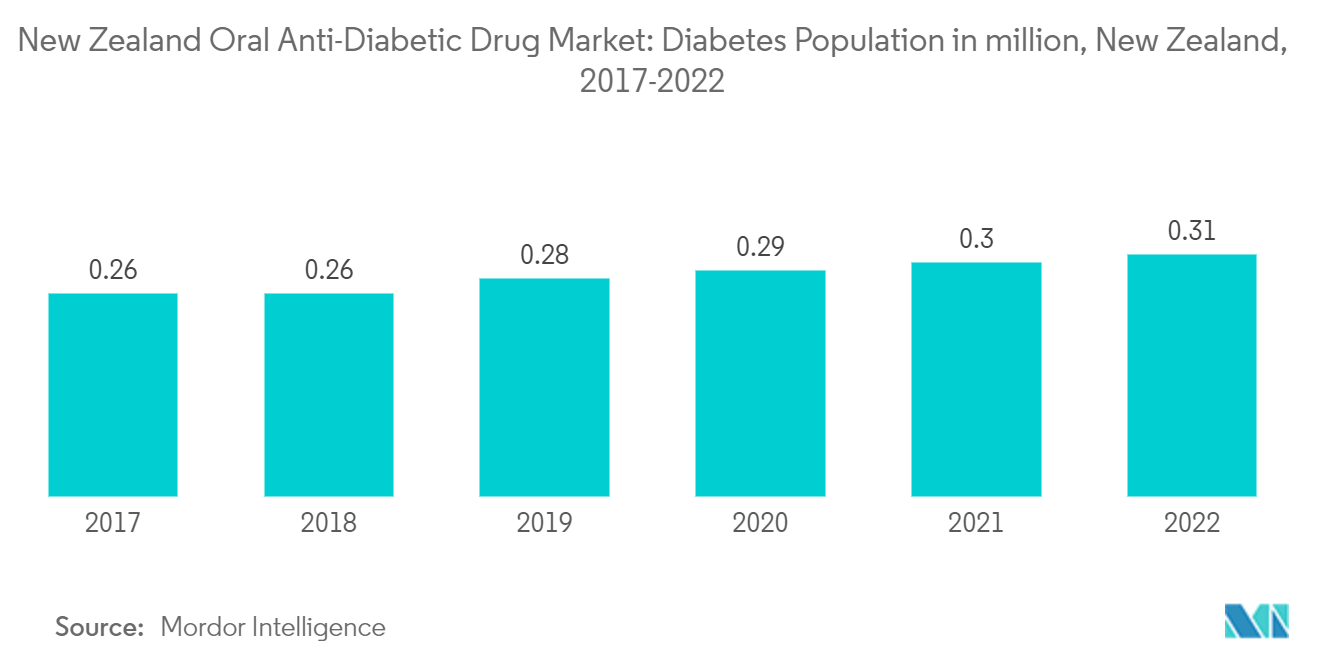Market Trends of New Zealand Oral Anti-Diabetic Drug Industry
Sodium-glucose Cotransport-2 (SGLT-2) inhibitor Segment Occupied the Highest Market Share in New Zealand Oral Anti-Diabetic Drugs Market in 2022
In terms of revenue, the Sodium-glucose Cotransport-2 (SGLT-2) inhibitor segment is anticipated to lead the India Oral Anti-Diabetic Drugs Market and post a CAGR of over 2.8% during the course of the forecast year.
A hormone produced in the gut called Sodium-glucose Cotransport-2 (SGLT-2) inhibitor promotes the release of insulin, decreases the secretion of glucagon, prevents gastric emptying, and reduces appetite. SGLT2 plasma levels are low during a fast and quickly rise following a meal. By enzymatic breakdown by dipeptidyl peptidase-4 (DPP-4) and renal clearance, circulating levels of intact SGLT2 rapidly drop. SGLT2 operates on GLP-1 receptors found in peripheral tissue, pancreatic islet cells, and other organs and plays a critical role in glucose regulation. By a number of mechanisms, including increased glucose-dependent insulin secretion, delayed stomach emptying, and decreased postprandial glucagon and food intake, GLP-1-based medicines (GLP1-RA and DPP-4 inhibitors) impact glucose control. Obesity, physical inactivity, hypertension, and hyperlipidemia are all frequently linked to T2DM. Those who have their blood sugar levels improperly managed to risk developing long-term microvascular and macrovascular problems. The quality of life and life expectancy is greatly decreased by these problems. T2DM is a complex disorder that places a heavy strain on the patient, their extended family, and the healthcare system. T2DM is thought to affect 5% of New Zealanders, and by 2040, that number is expected to rise to 7% of the population. Compared to other ethnic groups in New Zealand, Pacific, Mori, and South Asian communities are more likely to have T2DM and experience difficulties from the condition.

Increasing Diabetes Population in New Zealand is driving the market.
In New Zealand, "primary care" and "secondary care" are widely used to denote different types of medical treatment. The majority of people frequently seek out primary care as their initial form of treatment. This is typically your family physician or general practitioner. Despite the fact that patients must pay for this treatment, those with modest incomes typically qualify for a reduced price. All children under the age of six are eligible to get free doctor visits in New Zealand. Depending on the doctor, GP visits normally cost between NZ 45 and NZ 55. There is no additional cost for a GP visit for foreign travelers. Patients may be directed to secondary care, which is often thought of as specialized treatment, after seeing their physician. Patients may be directed to secondary care, which is often thought of as specialized treatment, after seeing their physician. A few examples of the services that are often managed outside of the major hospitals are hospital services, specialty diabetic services, specialist eye services, specialist renal services, and specialist diabetic services. If a patient is having problems with their diabetes or, in some situations, if they require insulin to treat their diabetes, they can ask to be referred to specialized diabetic services. Some diabetes doctors also run private practices, even though the professional services are free. While the precise cause of type-2 diabetes is unknown, type-1 diabetes is thought to have an unknown origin. The prevalent rate of type-2 diabetes doubled in the last ten years ago. Type 1 diabetes mellitus (T1DM) has increased significantly during the past 20 years. The biggest risk factor for T1DM and the cause of this increase in frequency is the growth in obesity. One of the chronic conditions with the quickest rate of rise in New Zealand is diabetes. Many investigations and surveys have revealed a substantial increase in the population of diabetes, which can be attributed to lifestyle choices.

